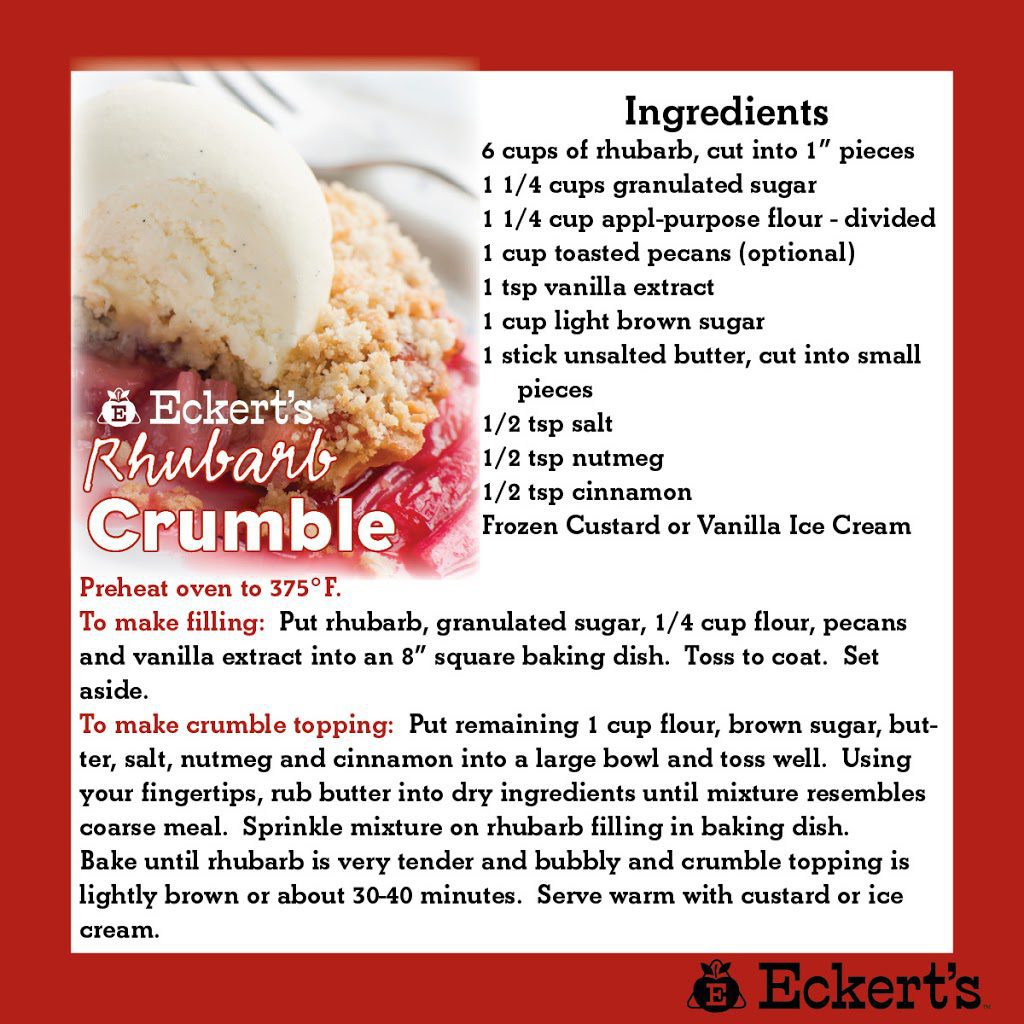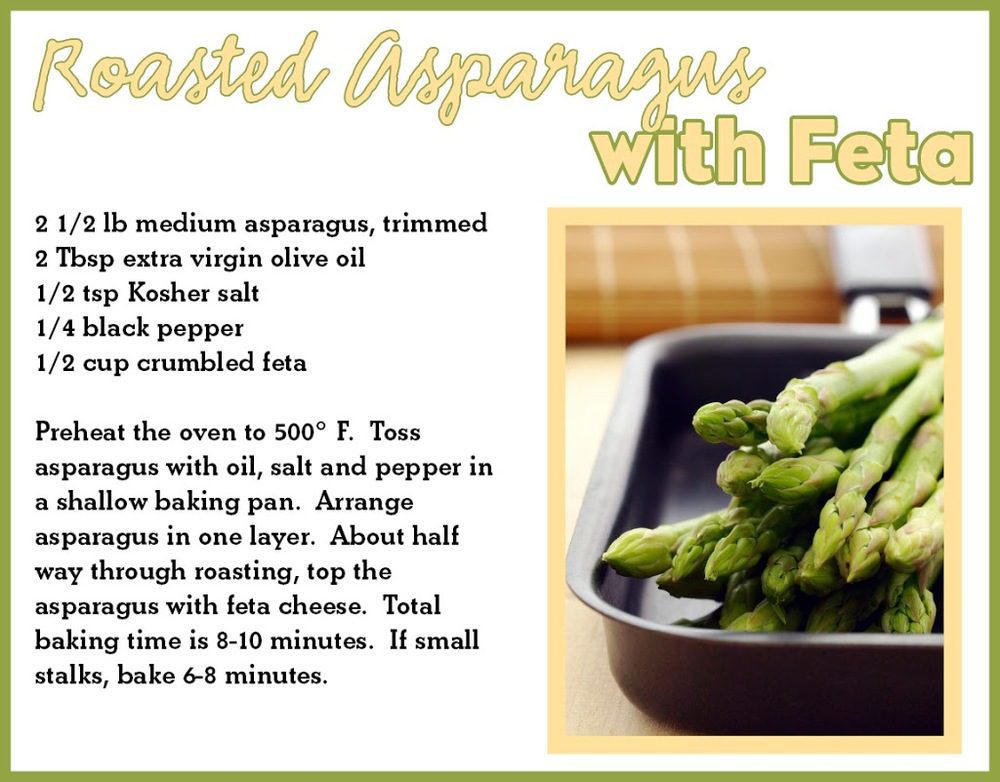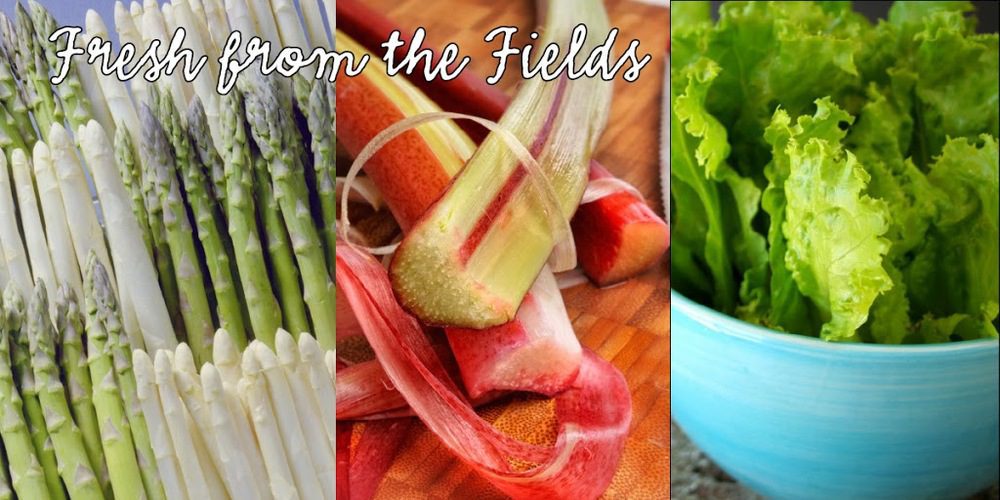
Warm weather and sunny days have come early this year, and with it has come the harvest of spring vegetables. Rhubarb, artisan lettuce, and both green and white asparagus are now available, all with good volume and great quality.
Rhubarb: Selection, Storage and Tips
Look for moderately-thin, crisp stalks that are dark pink to red. Avoid green, thick stalks. If the leaves are still attached, make sure they are not wilted and that they are free of blemishes. Place rhubarb stalks in a plastic bag and store for 3 to 5 days in the refrigerator crisper.
Rhubarb is pretty tart, so you will have to sweeten it when you cook it, but the redder the stalk and the longer it is cooked, the less sweetener you will need.
Asparagus: Selection, Storage and Tips
Homegrown white asparagus is a tradition at Eckert’s. Local farmers were among the first in the nation to begin mass cultivation of white asparagus over 30 years ago. White asparagus differs from green, in that it is never allowed exposure to the sun, halting the production of chlorophyll, the chemical responsible for giving the stalks color. Farmers mound dirt around the stalks to block the sunlight and then must dig the spears out of the dirt during harvest. The work is labor intensive, but the resulting snow white asparagus is delicious.
Even though white asparagus tends to be milder in flavor and more tender than its green relative, all varieties and colors of asparagus may be interchanged in recipes.
 Select stalks that are straight and are richly green in color with tightly-closed tips. Avoid stalks that are discolored or have ridges. Stalks should be firm, not limp. Try and purchase stalks that are about the same size, for ease of preparation. Do not wash asparagus before storing it. Trim the ends and either stand them in a jar with a inch of water, covered by a plastic bag, or wrap the ends with damp paper towels. Asparagus will keep in the refrigerator for 2 days.
Select stalks that are straight and are richly green in color with tightly-closed tips. Avoid stalks that are discolored or have ridges. Stalks should be firm, not limp. Try and purchase stalks that are about the same size, for ease of preparation. Do not wash asparagus before storing it. Trim the ends and either stand them in a jar with a inch of water, covered by a plastic bag, or wrap the ends with damp paper towels. Asparagus will keep in the refrigerator for 2 days.
To wash asparagus, simply move the stalk through cool water, using your hands to wash it. Never soak asparagus.
Asparagus needs to be cooked quickly, so sauteing and stir frying is a great prep method. When boiling, asparagus will cook even after being removed from boiling water. It is important that you don’t overcook it. Serve asparagus either warm or at room temperature. Refrigeration dulls the flavor of cooked asparagus.
Asparagus can be frozen for up to nine months, by blanching the stalks in boiling water for 3 to 4 minutes and then immediately chilling them in water.
Early plantings of lettuce and radishes are coming along nicely, as well. As long as temperatures stay reasonably warm, the harvest of tomatoes and sweet corn could come in as much as two weeks earlier than in recent years, with homegrown watermelon and cantaloupe right behind them. Of course, it’s never good to count the chickens before the eggs hatch, so we will just keep an eye on Mother Nature, and patiently await the arrival of her bounty!
Be the first to leave a comment!